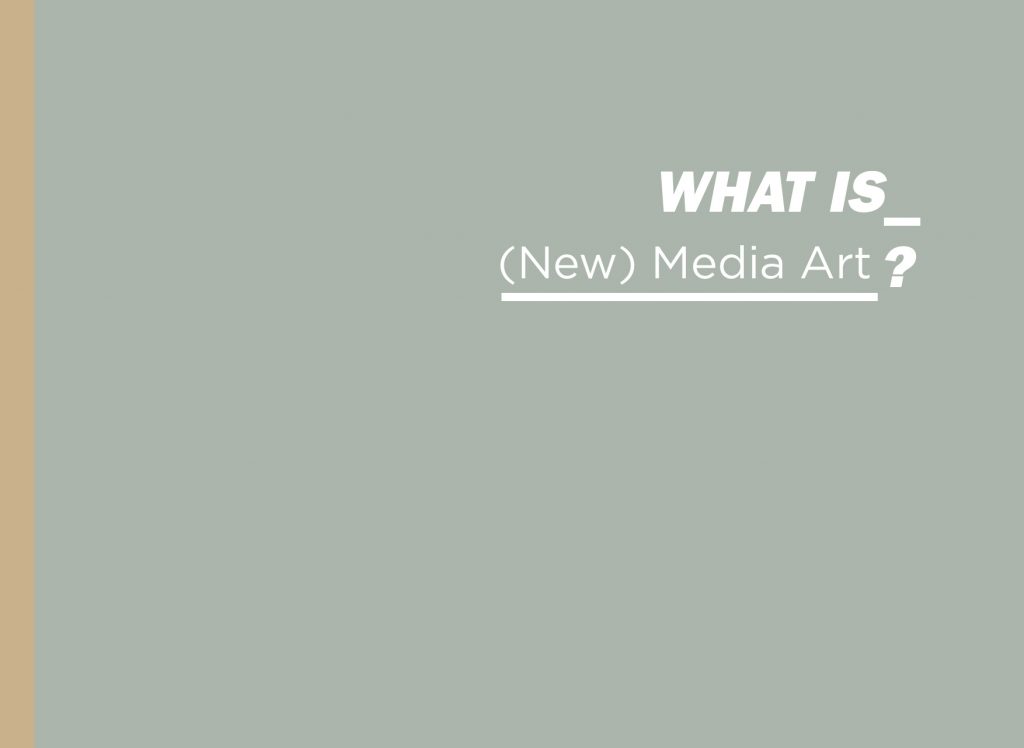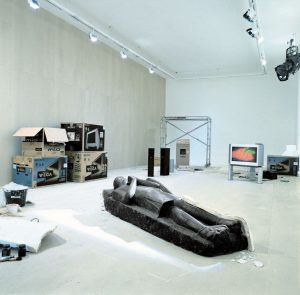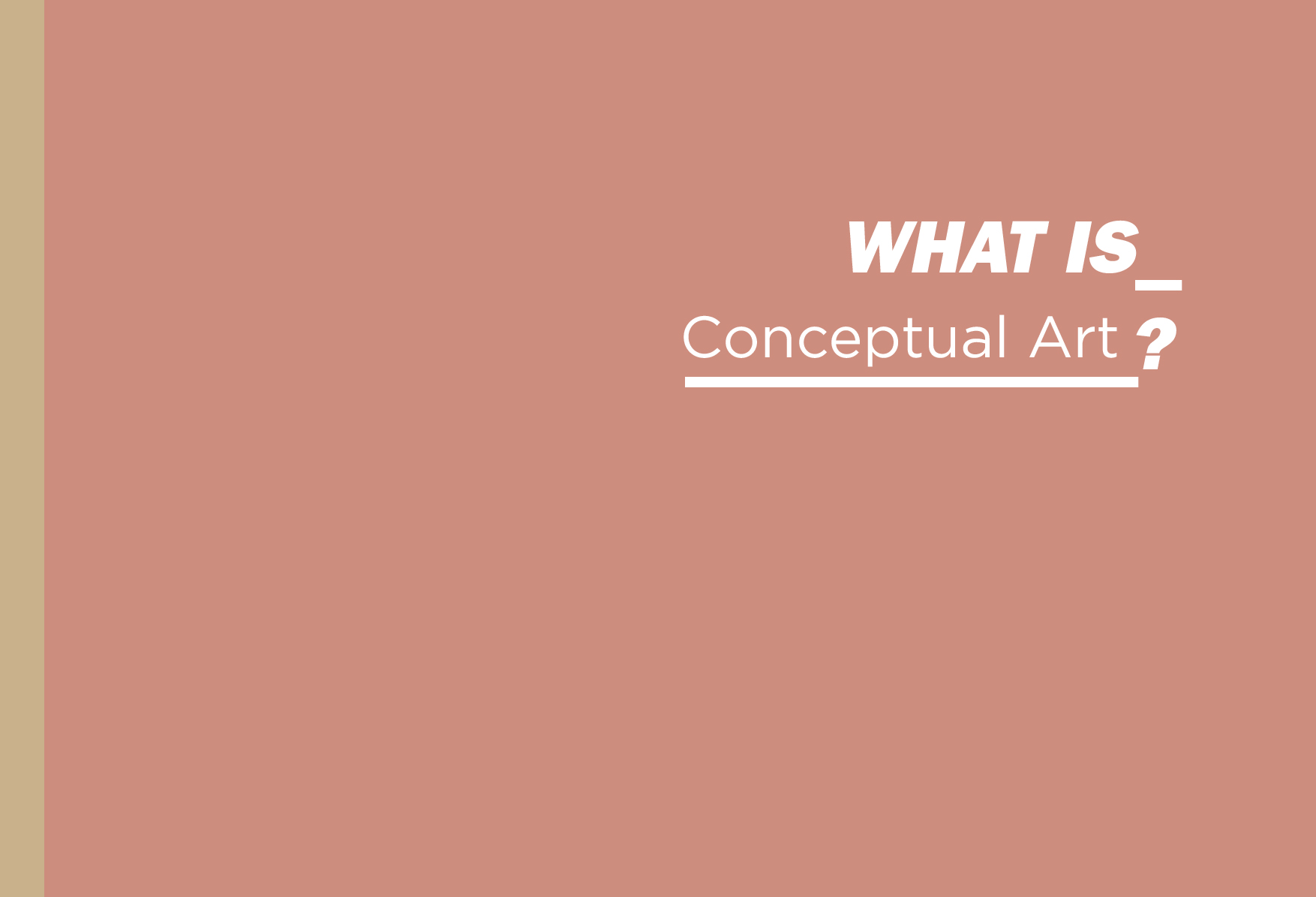Art and (New) Media, Through the Lens of the IMMA Collection

IMMA invited Maeve Connolly to write an essay on New Media Art, entitled Art and (New) Media, Through the Lens of the IMMA Collection, which focuses on artists and artworks in IMMA’s Collection as a means of describing and contextualising this complex and contested area of Contemporary Art practice.
The term ‘New Media Art’ is frequently applied to artworks, or art practices, involving media not traditionally or conventionally associated with the Fine Arts. Paintings, drawings and sculptures are routinely (although sometimes erroneously) regarded as original and unique works of art authored by a single individual, but the emergence of photography, film, video, audio and other technologies enabling reproduction through mechanical or digital means, radically alters the relationship between art and originality.1 This is one of the reasons why artists associated with the historical Avant-Garde, seeking to radicalise the relationship between art and society, often rejected painting or sculpture in favour of photography or cinema. Inevitably, however, media that are initially perceived by the art world as ‘new’ (such as video in the 1960s) soon become familiar and even conventional.
Artists have also been drawn towards non-traditional media because they are specifically interested in exploring the (rapidly changing) relationship between media, technology and society. These concerns were often evident in the work of artists associated with the Kinetic Art and Fluxus movements during the 1960s, such as Nam June Paik, whose installations and sculptures involving audiovisual technologies explore and contest the power of the mass media.2More recently, it is possible to trace a continuation of this critical tradition in the work of a younger generation of artists working with even newer media, from locative technologies, like GPS systems, to gaming software, bio-technologies and beyond.
Pictorialism and Performance
While many contemporary art practitioners reject media-based classifications altogether, categories such as ‘Lens-Based Media’ can be valuable, emphasising the parallels and tensions between art practice and a much wider history and culture of media use and production. Thinking about lens-based practice opens up points of connection between a contemporary artwork and such diverse cultural forms as a television news broadcast, a holiday snapshot taken with a mobile phone, or even a seventeenth-century painting in which the illusion of perspective was produced with the aid of optical technologies.
Several works in the IMMA Collection that might be classified as ‘New Media Art’ allude directly or indirectly to histories of technologically mediated representation, asserting connections as well as differences between new and older media. So, for example, Caroline McCarthy’s two-channel video work Greetings, 1996, calls to mind a history of landscape representation that extends from painting to tourist postcards and amateur video, while also drawing upon a performative tradition in artists’ film that is deeply indebted to silent cinema. The artist composes a picturesque image of the Irish countryside, complete with drifting clouds and rolling hills, before suddenly jumping up into the frame to temporarily include herself in this ideal landscape.
Michael Snow’s 60-minute single channel video Solar Breath (Northern Caryatids), 2002, also exploits established traditions of pictorial and dramatic representation. A highly significant figure for theorists of film in the 1970s, Snow directs his camera at the billowing curtains of a window opening out from his workshop onto the landscape of Newfoundland. The window suggests a frame though which (in narrative cinema) the camera might be expected to move, or even a proscenium arch within which (in theatre) some action might take place. Yet, Snow’s camera remains resolutely fixed and the viewer is left only with the fluctuations of the curtain as it moves in the breeze.
Solar Breath (Northern Caryatids) derives much of its appeal from its status as an unaltered document of a natural phenomenon occurring at a particular time and place. But for many artists in the 1960s and ’70s, the medium of video was most interesting for its capacity to blur the boundaries between event and document. Videotape, unlike film, could be played back, viewed and if necessary re-recorded immediately. Monitors could also be used within the context of a video work or performance to display a live or delayed image ‘feed’, enabling various forms of real-time interaction between artist, on-screen image and audience. In the single channel video Now, 1973, for example, Lynda Benglis moves between the roles of performer, operator and director, appearing to kiss a monitor that displays her own image, while continually repeating the phrases ‘Now?’, ‘Do you wish to direct me?’, and ‘Start the camera’.
Aura, Materiality and Analogue Technologies
Just as Benglis uses repetition to highlight the specificity of video time, others have emphasised the distinctive characteristics and properties of photography and film. Taking the reproducibility of the photographic image as a starting point, Craigie Horsfield makes only a single print, rather than an edition, and destroys his original negative. But even though this action results in a unique artwork, with the same claims to originality as a painting, the title of each work strongly asserts the specificity of the photographic process. Each title records where and when the photograph was ‘taken’ – or rather the exposure of the negative to light – as well as a second date referring to the production of the print.

Clare Langan is also interested in the interplay between painting and newer media. In films such as Forty Below, 1999, she combines dramatic shooting locations and hand-painted filters (attached to the lens of a 16mm Bolex film camera, which is wound by hand) in order to create exotic, otherworldly images. But although she is clearly drawn to the materiality of film, Langan seems to favour the expediency of newer image display technologies, because she exhibits her work on DVD. In contrast, Tacita Dean shoots and exhibits her moving image work primarily on film, often relying on mechanical looping devices for continuous projection and sometimes using optical sound so that the audio is encoded directly onto the celluloid. There is also frequently a relationship between the themes explored in her work and her attraction to 16mm film, a medium widely thought to be anachronistic, even obsolete.
There are parallels here with James Coleman‘s use of 35mm slide projection, a medium once associated with advertising, corporate communications and domestic photography. He has produced a number of ‘projected image’ installations involving slides, including Background, 1991-94, Lapsus Exposure, 1992-94, and I N I T I A L S, 1993-94. All three feature highly constructed still images, synchronised with soundtracks that incorporate voiceover narration. Coleman’s images and scripts are richly evocative and a vast array of historical and contemporary sources are referenced either directly or indirectly, but he generally withholds contextualising information, with the result that critics often excavate earlier works in search of meaning.
Collaboration, Appropriation, and the Politics of Representation
Other artists have embraced technologies and economies of digital media production and consumption, as well as more collaborative modes of practice. Carlos Amorales‘ two-channel installation Dark Mirror, 2004-2005, incorporates animation by André Pahl and an original score and piano performance by José María Serralde. Significantly, the animation is derived from a ‘liquid archive’ – an open and expanding collection of digital images assembled by Amorales’ studio, which is apparently available for use by others. A comparable example of collaboration can be found in Philippe Parreno‘s digital video Anywhere Out of The World, 2000, featuring a character entitled Annlee originated by a commercial animation company, co-purchased with the artist Pierre Huyghe and then made available to several other artists in accordance with the principles of ‘copyleft’.
This project can be situated in relation to a much earlier tradition of appropriation, in which artists borrowed and repurposed images from popular media. Dara Birnbaum was one of a number of artists to work with mass produced images of women’s bodies during the 1970s. Her single-channel video Technology/Transformation: Wonder Woman, 1978/9, is composed entirely of edited and looped special effects sequences from the Wonder Woman TV series, in which ‘Diana Prince’ is transformed in an explosion of light and sound into her tightly-costumed, crime-fighting alter-ego.
Willie Doherty‘s work during the 1980s and ’90s is also informed by critiques of representation. But rather than appropriating material from specific sources, Doherty explores the recurrence of certain images and narratives across a range of media, from photo-journalism to film and television drama. Initially working with photography, Doherty produced a number of black and white diptychs that combined images of Derry city and its surroundings with ambiguous yet suggestive text. He gradually moved towards colour photography and away from the direct use of text on image, relying on titles (as in the case of Border Incident, 1994) to evoke associations, and developed video installations, including The Only Good One is a Dead One, 1995, that engage with locally specific media genres such as television advertisements for the Confidential Telephone line.3
Gerard Byrne also responds to hybrid media genres, such as the magazine ‘advertorial’ or the ’roundtable discussion’, which may borrow from reportage or documentary but are nonetheless highly constructed. In Why it’s time for Imperial, again, 1998-2002, Byrne creates a film script from the text of a conversation between Frank Sinatra and Lee Iacocca (chairman of Chrysler), originally published as an advertorial for the Chrysler Imperial car in National Geographic. The text, never designed to be used as a script, is full of awkward phrases and Byrne exaggerates this quality by staging it three times in different locations. Byrne’s multi-channel installation New Sexual Lifestyles, 2003, is also based upon a text derived from a US magazine – this time a roundtable discussion on sexuality published in Playboy in 1973. Again the shooting location is highly significant as Byrne restages the discussion with Irish actors in a modernist building in Co. Wicklow. Designed as a summer house for the wealthy art patron Basil Goulding, the building also serves as the subject of a series of photographs that form part of the work. These photographs are exhibited alongside the edited footage of the re-enactment, which is presented on multiple monitors (with headphones attached), a mode of display that suggests the mediatheque or media archive, rather than the cinema.
Memory in the museum
Even though new media artworks may directly reference or evoke aspects of popular media production and exhibition, artists generally aim to solicit modes of engagement that are specific to the spaces and sites of Contemporary Art.4So, for example, Willie Doherty might structure a video installation (such as Re-Run, 2002) so that the viewer must continually shift their attention between two opposing screens in order to ‘read’ the work. Similarly, seating is rarely provided for James Coleman’s projected image installations; instead, multiple speakers are arranged around the exhibition space to invite viewing and listening from different positions. These works demonstrate a sensitivity to the museum gallery as a space through which the viewer moves, but some artists have structured their installations around the notion of mobility in even more pronounced ways.
This is the case with Jaki Irvine‘s The Silver Bridge, 2003, an eight-screen video installation that explores the spatialisation of narrative, drawing some of its themes and images from Carmilla, 1872, a novella by Sheridan Le Fanu. Widely regarded as a source of inspiration for Bram Stoker’s Dracula, Carmilla is a tale of repressed desire involving two young women. Like much Gothic literature, The Silver Bridge explores the persistence of attachments to people and places, and derives much of its power from the use of atmospheric settings (including the Phoenix Park and the Natural History Museum) as locations. The architecture of IMMA provides a particularly appropriate exhibition context for this work, as the eight projections are dispersed across a series of small interconnected rooms alongside a corridor, enabling multiple pathways through the narrative.

James Coleman’s Strongbow, 1978/2000, is also concerned with storytelling, focusing on the fraught interplay between history, myth and media in Irish culture. One of the first important new media works acquired by IMMA, Strongbow was placed on public display for several years during the early 1990s. At that time the work consisted of a spot lit replica of a tomb-effigy found in Christ Church Cathedral, and once assumed to be that of the Norman knight Strongbow. The replica was displayed alongside a video, on a monitor, of two hands clapping continuously, with the sounds of the clapping gradually rising to a boom and then receding. One hand is green, the other red and the image is distorted so that the hands appear to blur, leaving traces across the screen.
The work was interpreted in its original form as a critique of television’s insistence on the ‘noise and confusion of the present [offering] no particular insight on the past nor resolution for the future’.5 In 2000, however, Coleman presented a radically altered version as part of the IMMA exhibition Shifting Ground: Selected Works of Irish Art, 1950-2000. Strongbow, 1978/2000, was no longer situated in a darkened space; instead the components were clearly visible and several new elements had been added. The residue of the plaster mould was evident on the resin cast of the effigy, and the video of the hands clapping was displayed on a widescreen ‘Sony Art Couture’ monitor. In addition, the packing boxes for several monitors were stacked against the wall, along with a scaffold tower and the residue of the installation process.
Given its subject matter, these revisions to the form of the work can be read as a response to the context of the exhibition Shifting Ground, which focused partly on history and identity. But Coleman’s action also raises broader questions about the interpretation of new media artworks. The first version of Strongbow was produced towards the end of the era of classical ‘TV’, just before the widespread availability of home video and the emergence of cable channels aimed at niche audiences. During the classical era of broadcasting, television (like radio) had contributed to processes of nation formation through its insistence upon a continuous, shared, sense of the ‘here and now’. But by 2000, the experience of television – and its relationship to the national context – had altered radically. Through the alterations to Strongbow, Coleman highlights the complexities and the contradictions that are integral to the production and exhibition of New Media Art, the meaning of which is at least partly structured by the continually shifting relationship between media, technology and society.
© Maeve Connolly, 2011
- See Walter Benjamin, ‘The Work of Art in the Age of Mechanical Reproduction’ in Illuminations, (ed.) Hannah Arendt, trans. Harry Zohn, London: Fontana, 1973, pp. 219-254.
- For a recent overview of this tradition see Edward A. Shanken (ed.), Art and Electronic Media, London: Phaidon, 2009.
- See Martin McLoone, ‘The Commitments’, Same Old Story, Exhibition Catalogue, London/Derry/Colchester: Matt’s Gallery/Orchard Gallery/ Firstsite, 1997, pp. 8-22.
- For further exploration of this issue see Maeve Connolly, The Place of Artists’ Cinema: Space, Site and Screen, Bristol and Chicago: Intellect and University of Chicago Press, 2009.
- Anne Rorimer, ‘James Coleman 1970 -1985’ (1985), in James Coleman (October Files No. 5), (ed.) George Baker, Cambridge, MA: MIT Press, 2003, p. 11.
Categories
Up Next
What is Conceptual Art?
Wed Nov 11th, 2015